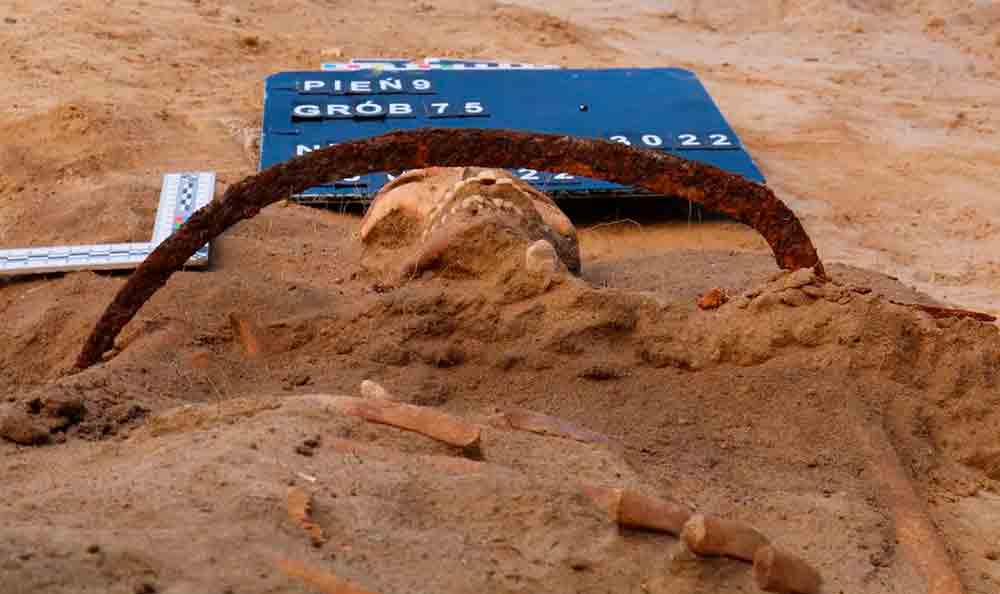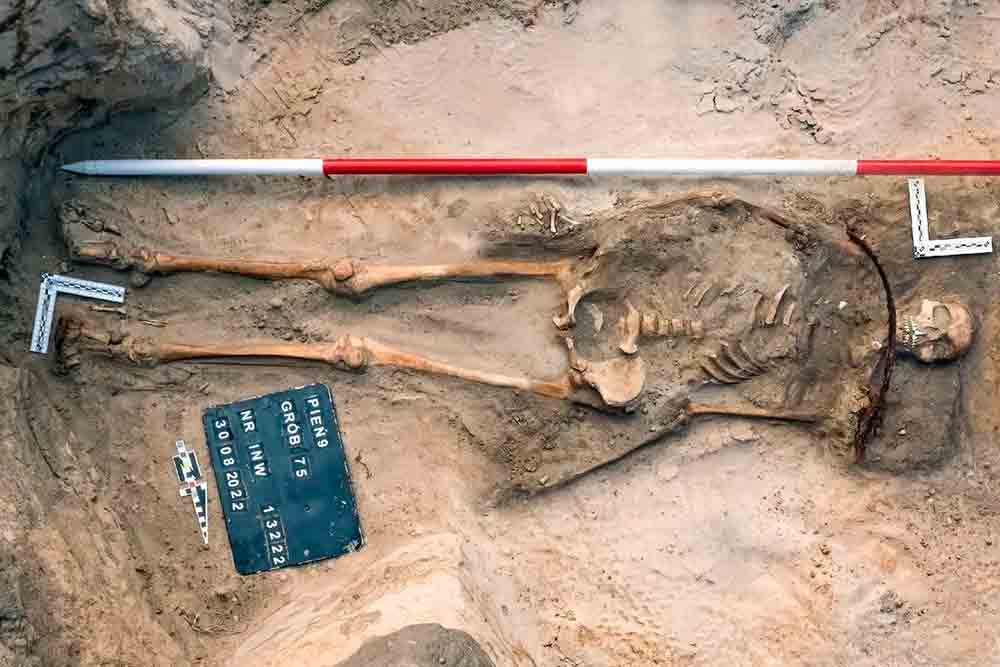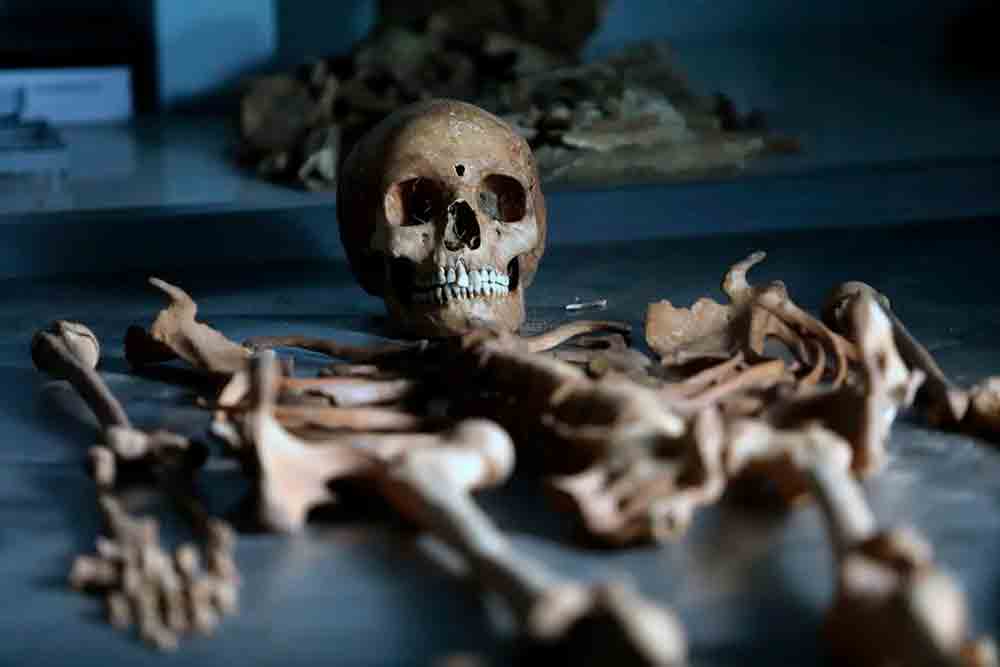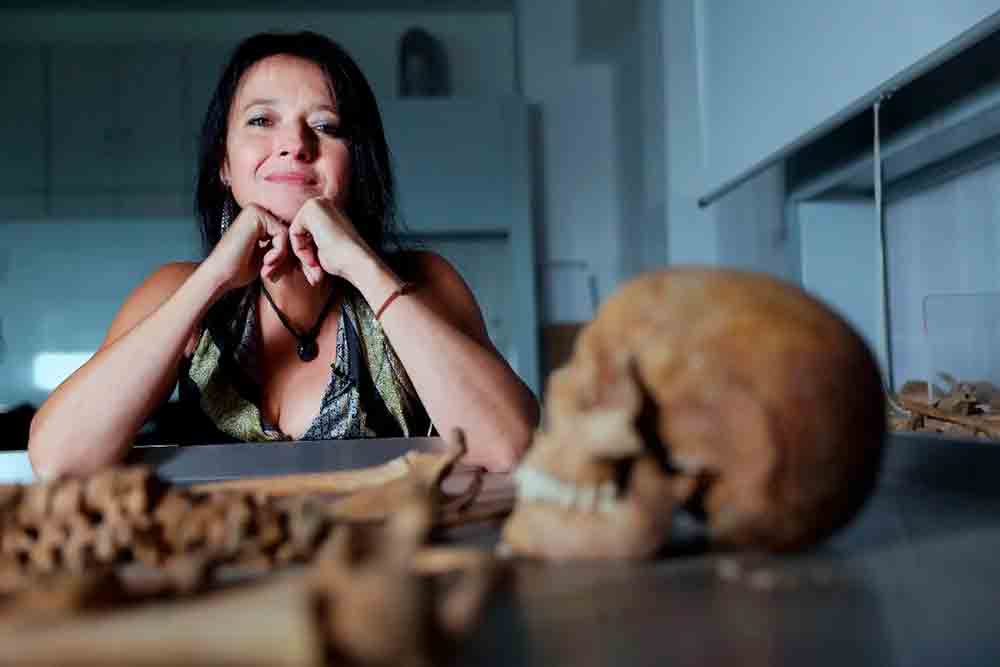 Young woman buried face down with a padlock and a scythe in her throat to ‘prevent her from returning to the living’. Photo: Reproduction from Instagram @umktorun
Young woman buried face down with a padlock and a scythe in her throat to ‘prevent her from returning to the living’. Photo: Reproduction from Instagram @umktorun
The skeleton of a young woman with a triangular padlock on her toe and a scythe in her neck was discovered by scientists from Nicolaus Copernicus University in the cemetery of Pń, near Dąbrowa Chełmińska.
+ Understand what this giant capsule hanging in the middle of an apartment in a property for sale in the United Kingdom is
+ Paige Spiranac Admits Her B…s Got Bigger and Explains to Fans About the Change
Archaeologists had previously found artifacts at the site during previous excavations that could indicate the so-called anti-vampire practices.
Wooden stakes, garlic, silver weapons, and sunlight are just some of the ways to combat vampires described in fiction. These creatures were feared not only by the heroes of books but also by people who lived centuries ago.
As a result, those suspected of supernatural powers were often buried in a very specific way: face down, tied with ropes in the fetal position, with their heads pressed into the ground with a stone, or with their chests pierced by a sharp instrument.
Scientists also found graves with padlocks and keys, which were used not only to prevent the dead from returning to the living but also to close communication between the world of the living and the dead and to end a particular stage so that, for example, a deceased child would not drag others into the afterlife.

An Unusual Discovery
Scientists from Nicolaus Copernicus University in Toruń discovered the skeleton of a woman in the Pń cemetery, doubly protected against rising from the grave.
The people who buried the girl placed a triangular padlock on her left big toe and, in addition, secured her neck to the ground with a scythe.
The tool did not cause any harm to the deceased after her death – her head was not severed, and her spine was intact. The skeleton was quickly nicknamed a “vampire” in the media. It is a very catchy term for a skeleton that was found, but it is not entirely accurate.
“Our discovery does not necessarily indicate that a vampire was buried in this place,” explains the head of the research in Pniu, Dr. Dariusz Poliński, a professor at Nicolaus Copernicus University in the field of Archaeology. “I would consider these treatments more as ‘anti-vampire’ activities. Perhaps the woman had some physical or mental defect, or her fellow residents had treated her poorly when she was alive and were afraid of frightening them after her death.

When the inhabitants of a particular community had such concerns, they often decided to unearth the body and add “anti-vampire” artifacts. In this case, however, there is no visible subsequent interference in the grave. Researchers observed an intriguing greenish discoloration on the palate of the skeleton, which likely indicated contact with an object made of copper or a copper alloy. If it had been a coin, it could have been a third safeguard against the deceased’s return to the world of the living.
“In this cemetery, we have already found coins in graves, which is important – placing them in the mouths of the deceased, including a silver half-grosz crown of Jan Olbracht, dated from 1492-1498, and a silver grosz and a half crown of Sigismund III from 1626,” says Prof. Poliński.
So, what do we know about the woman buried with a scythe in her neck? She was between 17 and 21 years old at the time of her death.

“This is evidenced by the bones of the girl,” explains the anthropologist and archaeologist Dr. Alicja Drozd-Lipińska from the Faculty of Biological and Veterinary Sciences at Nicolaus Copernicus University. “Not all the epiphyses of the long bones are fused with their diaphyses. Some pathological and developmental changes can also be noted in the skeleton, but without a complete analysis, it is too early to discuss what caused them and what effects they caused.
Researchers see no reason to claim that the woman was a victim of execution or punishment, for example, for witchcraft. This is evidenced, among other things, by the fact that she was buried with great care, probably in a coffin, although there are no traces of wood in the trench. However, a very clear outline of the pillow on which the deceased’s head rested was observed. The young woman probably came from a family of high social status. On her head, she wore a headscarf, probably a silk bonnet, as fragments of this fabric were found in the grave, along with a gold or silver wrapper.
Archaeologists are paying attention to another detail. The girl’s left hand was not placed along her body but inclined to the left. This is another puzzle to solve.
“We are preparing for detailed examinations,” says Dr. Drozd-Lipińska. “The skeleton must now be cleaned of dirt and subjected to further research and analysis, which may allow us to determine if there were biological reasons for our deceased to be considered ‘different’ by her relatives.
A grave with equipment considered in literature as “anti-vampire” is not the only discovery at the site. So far, scientists have found more than 60 graves from the century and several medieval burials, as well as a horse burial. They came across the cemetery by accident. Prof. Poliński’s team was searching for the remains of an old medieval fortress and the prosecutor’s office of the Teutonic Knights from the 14th century nearby.
“After work, we went to the hill to admire the Vistula River valley and look at Fordon on the other side,” recalls the anthropologist. “They say that bones turn white in the sun, and that was the case with us. On the hill, on the edge of the sand, we noticed human bones sticking out of the ground.
Source: Nicolaus Copernicus University
Photo: Reproduction from Instagram @umktorun”

